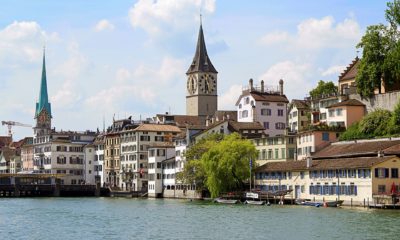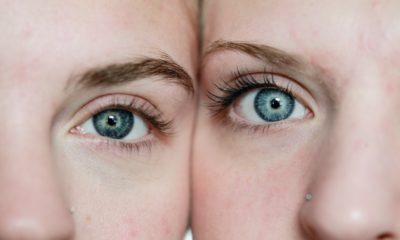Business
Gender gap would take 202 years to close
While there have been widespread campaigns and significant events in the past year to push for gender equality, a new report found that it may take another 202 years for the new generation to bridge the gap between genders.

The gap between men and women in terms of economic opportunity which includes pay discrepancy is extremely extensive that it will take more than two centuries to bridge it. This is according to the Gender Gap Report released by the World Economic Forum early this month.
To be fair, gender equity has improved to some extent this year compared with the previous years. The improvement, however, could not compensate for the terribly long years women need to wait to be able to close the gap, most especially in terms of the wage gap.
“What we’re seeing globally is that we don’t have any country that’s achieved gender equality, regardless of the level of development, region or type of economy. Gender inequality is the reality around the world, and we’re seeing that in all aspects of women’s lives,” Anna-Karin Jatfors, regional director for United Nations Women said.
The Gender Gap Report compared 149 countries and ranked them based on their progress toward the achievement of gender parity. Benchmarks used for the report were economic participation and opportunity, educational attainment, health and survival, and political empowerment.
Political empowerment for women
The report found that gender inequality on political empowerment remained to be the most common problem across the countries surveyed for the report. Of the 149 countries, 77.1 still had men as primary leaders of their governments. Only 17 countries at present have women as heads of state.
Surprisingly, most countries that showed significant achievement in women political empowerment belonged to the developing world. The report said, “full parity” on political governance was already achieved in the Bahamas, Colombia, Jamaica, Laos and the Philippines.
Gender wage gap slightly improved in 2018
A “minimal progress” was achieved this year compared when the survey was conducted last year. Still, the gap in economic participation and opportunity remained to be the second-largest discrepancy between males and females.
Of the countries surveyed, 41.9 percent still has problems with providing equal economic opportunities between men and women with only 34 percent of managerial positions were taken by women.
The pay gap was worst in the Middle East and North Africa where only 7 percent of managerial positions were given to women. The inequality was particularly pronounced in Egypt, Saudi Arabia, Yemen and Pakistan.
On a slightly positive note, 60 percent of the women have equal access to financial services as men. In terms of owning property, however, only 42 percent of the women of the countries surveyed owned assets.
Meanwhile, a separate survey of 29 countries showed that women still spend more time doing housework and unpaid tasks compared to men.
Gender gap in education to be closed in 14 years
The discrepancy between men and women in terms of educational attainment is significantly lower at 4.4 percent. The report has, in fact, found that this category is on track to be bridged within the next 14 years. Sixty-five percent of girls on average and 66 percent of boys were currently enrolled in secondary education while 39 percent of women are going to college compared to only 34 percent of men.
Still, governments need to exert more effort with their educational policies as there remains to be more than 20 percent of women in 44 countries who are illiterate.
The best countries to be a woman

Iceland is the most gender-equal country in the world. (Source)
Based on the assessment of 149 countries, WEF ranked Iceland as the most gender-equal country in the world, closing as much as 85 percent of its overall gender inequality this year. It would be recalled that Iceland’s own Prime Minister Katrin Jakobsdottir encouraged Icelandic women in October to walk out from their workplaces and protest against wage gap and sexual harassment.
Norway followed Iceland in the ranking, next were Sweden and Finland. Nicaragua made it to the top five, followed by Rwanda and New Zealand.
The Philippines climbed to the eighth position globally while it was the most gender-equal country in Asia. Laos was far at number 26 while Singapore ranked 67th and China was at 103th. The Philippines has outperformed other Asian countries in terms of equality in education, politics and compensation.
Meanwhile, Ireland was at number nine and Namibia was at number 10.
Accelerating the fight against global gender inequality
While the Gender Gap Report 2018 suggested that there has been a relatively slow pace with regard to achieving gender equity, the report challenged governments, policymakers and other stakeholders to fast-forward the process. According to Jatfors, the sluggish pace could be addressed by implementing aggressive equal pay laws, significant government investments in parental and elderly infrastructure, and protecting women’s legal rights during their pregnancies.
Most importantly, however, the success of the fight against inequality relies on men, women and all genders in between. As with all fights in history have proven—may it be the fight for the right to vote or fight to abolish slavery—success is stronger when people work together.

-

 Crowdfunding1 week ago
Crowdfunding1 week agoCrowdfunding Grants Open for Business Projects Until January 2026
-

 Biotech20 hours ago
Biotech20 hours agoHaptena Therapeutics Launches with €3 Million Funding to Target KRAS-Mutated Tumors
-

 Impact Investing2 weeks ago
Impact Investing2 weeks agoHigh Awareness, Low Adoption: The VSME Challenge for European SMEs
-

 Crypto7 days ago
Crypto7 days agoBitcoin in 2025: Mainstream Momentum, Price Weakness, and a Pivotal Year Ahead

























You must be logged in to post a comment Login